Sampdoria are something of a model club in terms of their ability to survive in the top half of Serie A despite the selling of many of their more marketable playing assets. That they are able to continually renew their key playing staff year on year suggests that they have a strong culture running through their club that allows for consistency.
This only comes, especially in Serie A, when the head coach and sporting director have an understanding of the game model and player profiles to be successful on the pitch. This is something that Sampdoria have excelled in since 2016 when they appointed the Empoli coach Marco Giampaolo to take charge at the club.
To fully understand what makes the Sampdoria model work we have to break it down into two key areas. Firstly, the coach and his game model on the field; and secondly, the recruitment strategy that provides the players that match the profiles that the game model requires. Teams can be strong in one area or the other but when there is a sense of synergy between the two we see something truly interesting start to take place.
We should, however, be clear we are not talking about the makings of a superclub. Sampdoria are relatively modest in terms of budget and in terms of expectations. We have rarely seen them launch credible challenges for Champions League football in recent seasons.
What we have seen though is them occupy spaces in the middle to upper reaches of Serie A consistently. They are stubborn and dangerous opponents for even the top sides domestically, and there is a definite sense that they are one small step away from becoming regulars in European qualification.
So far this season they sit in seventh place, just three points from fourth. This is despite having sold over €50m in talent last summer. This is all part of the Sampdoria model though. They identify and recruit talent from a variety of sources before allowing that talent to develop through regular first-team minutes before selling them on to make a significant profit.
That profit is then split into sections for continued playing investment as well as improved infrastructure throughout the club. The aim is eventually for this investment in facilities to yield the homegrown players to supplement the player identification side of their squad building.
The appointment of Giampaolo appears to have been an inspired one. The 51-year-old Swiss coach is not an overnight sensation having started as a head coach at Ascoli in 2004. His name is still not widely known outside of Italy. It was when he joined Empoli in 2015 that he began to make an impression.
He continued the tradition that the Tuscan side had with the diamond in midfield and fully developed the 4-3-1-2 system that we now see at Sampdoria. Now, such has been his impact at Sampdoria, we are seeing Giampaolo linked with a series of high profile coaching roles throughout Italy.
I believe that given the impact that Giampaolo has had at Sampdoria we have to start with them before moving on to look in more depth at the recruitment at the club.
The tactical system
The game model implemented by a coach at a club is perhaps the most essential factor in on-field success. A club can survive poor recruitment over a period of time if the recruitment is strong. On the other hand, strong recruitment is all but useless when combined with a poor game model: just look at Manchester United under Jose Mourinho.
At Sampdoria, and at Empoli before that, we have seen Giampaolo stick to his favoured 4-3-1-2 shape with the midfield creating a diamond when in possession. Within this model, there is a large amount of flexibility in the attacking phase. The wide midfielders in the three move out effectively to form triangles with the fullback and the forward on that side of the field. Indeed a relatively high proportion of goals for Sampdoria comes from these combinations that lead to penetration into the penalty area and simple finishes.
Sampdoria are not just an attacking team though. They are gaining more recognition this season for their defensive performances, as the excellent David Sellini pointed out in this piece for us in October. As ever when breaking down the tactical model of a team, it is important to separate the key phases of play and look at them one at a time.
Attacking phase
The 4-3-1-2 system that Giampaolo prefers allows for a high degree of flexibility in the attacking phase. The two forwards and the most advanced midfielder can interchange positions on a regular basis in order to confuse the opposition and disrupt their marking schemes.
So far this season we have seen the evergreen Fabio Quagliarella and Gregoire Defrel pick up the most first-team minutes with 1,552 minutes and 1,161 minutes respectively. Both of these forwards are similar in terms of their playing style and preferences with neither being particularly strong when receiving the ball and holding it up. Instead, both like to drop off or drift wide in order to create opportunities for quick combinations with their teammates.
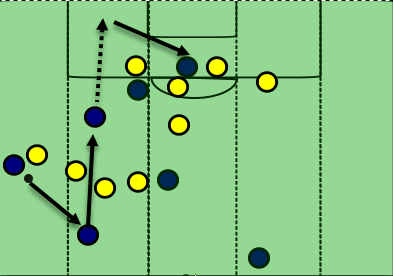
The rotations of the forwards and most advanced midfielder often create pockets of space that can be exploited by Sampdoria as they move into the final third of the field. The three deeper midfielders and the fullbacks combine to offer options to the man in possession across the width of the pitch.
In the example above, the rotations create space in behind the pressing players that were occupied by one of the forwards. As the ball is shifted back from the full-back to the left-sided midfielder he has the option to switch across to the other side. Instead, as he has been coached by Giampaolo, he has the confidence to try the line-breaking pass instead. This one pass essentially negated five opposition players and the receiving player was able to turn and attack the penalty area before squaring the ball for an easy finish.
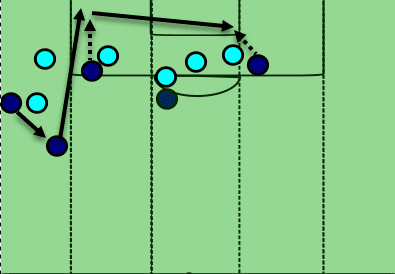
These passing combinations are a regular route that Sampdoria use in order to access the spaces in behind their opponent’s defensive line. Once again here we see a similar set of movements with the ball being set back by a fullback for the wide midfield players. A penetrative pass is then played to the forward who can move behind the defensive line to pull the ball back.
The beauty of the 4-3-1-2 in the attacking phase is that there is a huge amount of balance in terms of attacking down the wide areas of overloading the central areas. The two wide midfielders in the diamond are capable of combining out in wide areas, as we have seen above, or moving into narrow positions to progress the ball through the centre of the pitch.
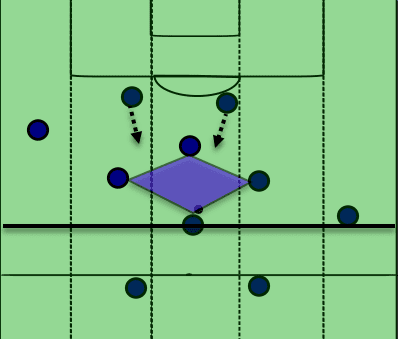
With the strong positional structure in the centre of the field Sampdoria are solid in possession with immediate passing opportunities available to the man on the ball. With the two forwards both capable of dropping deep there are obvious overloads that can be created through vertical passing combinations.
The true width in the system is provided by the two full-backs who work in tandem with one another. One will advance on to a high line when in possession while the other will remain deeper, usually on the same line as the deepest controlling midfielder. All of these mechanised movements make it difficult for the opposition to create an effective defensive structure.
Transition
First, a small point but an important one. When analysing game models professionally I will always split the transition section into two sections; from defence to attack, and from attack to defence. For the purposes of what is already a long article though, I will cover both in a single section.
In terms of the transition from attack to defence the 4-3-1-2 benefits from being compact in nature. When Sampdoria lose the ball they do press, but not ferociously. The first three players look to delay the ball being played forward quickly or win the ball back high up the field. The rest of the tactical structure, the midfielders and defensive line, will quickly drop back to create a solid structure that the opposition will struggle to play through.
The transition from defence to attack is slightly more nuanced.
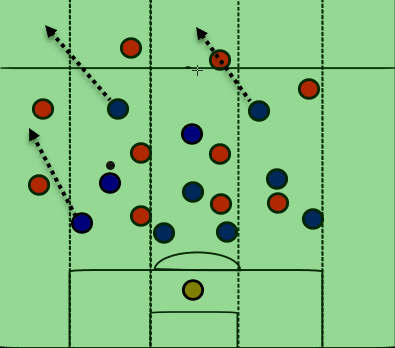
When the ball is won back by the midfielders of full-backs we will see an immediate move from Sampdoria to flood that side of the field. The near-side full-back (or wide midfielder) and forward will make immediate diagonal movements to that side of the field. This gives the player in possession options on various lines to play quick vertical passes through.
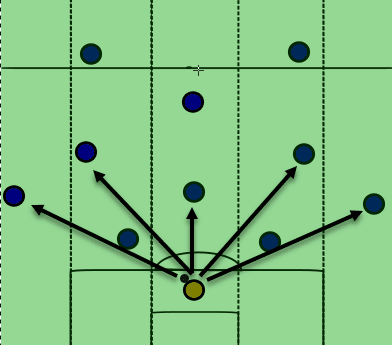
When the transition is led by the ball being in the hands or at the feet of the goalkeeper, the shape in transition is slightly different as width is created on both sides of the field. The full-backs immediately split wide on a line that is originally level with the controlling midfielder. The two wide midfielders also split wide into the half spaces.
These movements stretch the opposition defensive structure and create passing lanes that see the ball easily played out into the wide areas or through the centre with the static controlling midfielder.
Defensive phase
The 4-3-1-2 used by Sampdoria under Giampaolo lends itself to a compact and solid defensive base in the defensive phase.
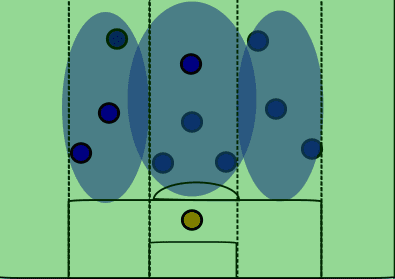
The balance defensively is superb with strong layering and occupation in the central areas as well as in the half spaces. The forwards and the wide midfielders can defend the central areas or move into the half spaces or the wide areas where the need arises.
The true strength of the defensive structure comes in the triangle of the two central defenders and the controlling midfielder at the base of the midfield diamond.
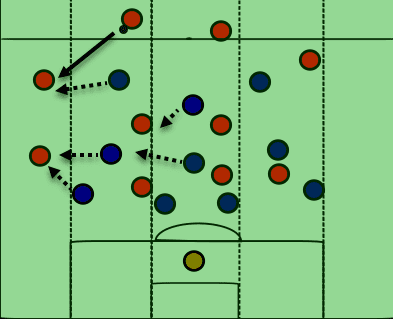
The first priority for Sampdoria in the defensive phase is to prevent the opposition from accessing central areas as they build up. They also, however, have the flexibility to shift out and defend in the wide areas should the opposition try to play around the defensive block. As the ball is played wide Sampdoria shift their block quickly to press the ball and prevent the opposition from having easy possession in the final third.
Recruitment
Now that we have seen the game model that Sampdoria utilise under Marco Giampaolo we have to consider the second strand of this piece: the recruitment.
The person recognised as being responsible for the astute talent identification at Sampdoria is the former Spurs scout Riccardo Pecini. Pecini works closely with the sporting director at the club Carlo Osti in order to keep Giampaolo supplied with the players he needs in order to play the way that he wants to.
In order to do this, Sampdoria scout and identify talent from a variety of markets across Europe where they have secured value for money by betting on potential early. Three key markets that emerge when you analyse their transfer activity are Poland (Bartosz Beresynzskyi, Karol Linnety, Dawid Kownacki) Belgium (Omar Colley, Dennis Praet) and Holland (Joachim Andersen).
In accessing these divergent markets from across Europe we see Sampdoria supplement the squad with other recruitment from within Italy in a manner that shows an advanced understanding of squad building dynamics. In order to get a fuller picture of what Sampdoria and Pecini are doing, I have identified three recent sales that showcase the talent identification and development model at the club.
Lucas Torreira
Let’s start with the most obvious first: Uruguayan midfield star Lucas Torreira. The midfielder was signed by Sampdoria from fellow Italian side Pescara for €3m before leaving last summer to join Arsenal for a reported €30m. This handed Sampdoria an impressive profit of €27m.
That Torreira was talented was never in doubt. How to maximise that talent was somewhat less clear. Indeed, Torreira initially picked up some minutes for Pescara as an attacking midfielder. In 2015/16 he moved to Sampdoria and immediately became a key component in their midfield. In the 2016/17 season a relatively static Torreira picked up 3,049 minutes in Serie A alone, returning three assists. In the 2017/18 season, his minutes remained relatively stable at 3,185.
It was in this season that Torreira ascended to becoming a key player for his club. This culminated in an appearance at the 2018 World Cup for Uruguay. It was an open secret that Torreira would be sold that summer but Sampdoria extracted good value from Arsenal before letting him leave.
Milan Skriniar
Now aged 23 and playing his club football for Inter, Milan Skriniar benefitted hugely from being identified and signed by Sampdoria from his native Slovakia.
He was signed initially by Sampdoria from his first club MSK Zilina for €6m in 2016 before moving to Inter for €27m in 2017, generating an impressive profit of €21m. During his single season in Genoa, Skriniar played 2,998 minutes and picked up just five yellow cards and one red card in this time: impressive for a defender.
There is a high probability that Inter Milan were already aware of Srkiniar through their own talent identification network. Seeing him play and thrive in Serie A convinced them to move for the defender. The cost of their indecision? €27m. A nice profit for Sampdoria showing the willingness to be early actors in the market.
Patrick Schick
Originally from the Czech Republic, Schick moved to Sampdoria from his hometown club Sparta Prague for €4m in 2016 before leaving in 2017 to join AS Roma for a reported €30m. A profit of some €26m was created, although the latter deal is laden with incentives and clauses.
In the 2016/17 season, we saw Schick play a relatively low 1,504 minutes, although his contribution of 11 goals and five assists over that time showcases his talent. Originally he was thought to be moving to Juventus but they pulled out of a deal after the medical showed a condition of the heart that was previously unknown. This medical condition was obviously not as serious as initially thought as Roma were happy to complete the deal soon afterward.
So, three players and a profit of some €74m suggests that Sampdoria must be doing something right in the transfer window. It can be easy to look at these deals in hindsight, however. Why don’t we take a look and see if we can predict three players who will be next to leave Sampdoria for a profit?
Dawid Kownacki
The 21-year-old Polish forward was signed from Lech Poznan for €4m in 2017. So far in his career in Italy, he has played 960 minutes over the course of last season and this registering 6 goals and 3 assists.
His playing style is based on physicality in and around the penalty area. In this sense he brings an interesting alternative to the more mobile front two favoured at the moment by Giampaolo. It is a sign of how highly rated he is in his native Poland that Kownacki already has four caps and one goal for the national team, despite huge competition for the forward spaces.
I expect Kownacki to be given more significant exposure to the first team over the second half of this season and next season. At that point expect there to be significant interest in securing his services.
Joachim Andersen
FC Twente of Holland were relegated as a result of financial mismanagement and Sampdoria moved quickly to take advantage of this signing the cerebral Danish defender for just €1.4m in 2017.
Over 18 matches so far this season Andersen has played every minute (1,620) and registered a single assist. Perhaps more impressively for a central defender Andersen is yet to be booked in his Serie A career. A defender who relies on his intelligence and positioning as opposed to pace and power, Andersen has adapted well to the more tactically advanced football in Italy.
He is also developing a reputation as a player capable of bringing the ball out from the back in his own right. If Andersen continues to develop as he has so far in Italy, then expect to see clubs circling him come the summer transfer window at the end of this season.
Ronaldo Viera
I have to admit to being somewhat surprised when Sampdoria moved in 2018 to sign the 20-year-old midfielder Ronaldo Viera from Leeds United for €6.5m. Born in Guinea-Bissau but an English youth international, there was a significant buzz around his performances for the national team.
Still, the high level of investment in the midfielder caught me by surprise. To date, Viera has secured 178 minutes of first-team football in Italy playing predominantly at the base of the midfield diamond. This may seem like a relatively small amount, but given that this is the position vacated by the aforementioned Lucas Torreira the level of tactical information that Viera has had to learn will be huge.
By this point next season I expect Viera to be a mainstay in this Sampdoria team. At that point, his status as a homegrown player in England will lead to a huge amount of interest from Premier League sides.
Conclusion
So, there you have it: around 2,500 words on how Sampdoria combine recruitment with an effective tactical model in order to run a successful club.
Sampdoria have a clear and effective game model that they obviously believe in. This model is supported by recruitment staff who understand the needs and profiles of each position within the game model.
They are fantastic to watch and worth following closely.
If you love tactical analysis, then you’ll love the digital magazines from totalfootballanalysis.com – a guaranteed 100+ pages of pure tactical analysis covering topics from the Premier League, Serie A, La Liga, Bundesliga and many, many more. Get your copy of the FIRST of two December issues for just ₤4.99 here, or the SECOND of the December issues with an annual membership right here.

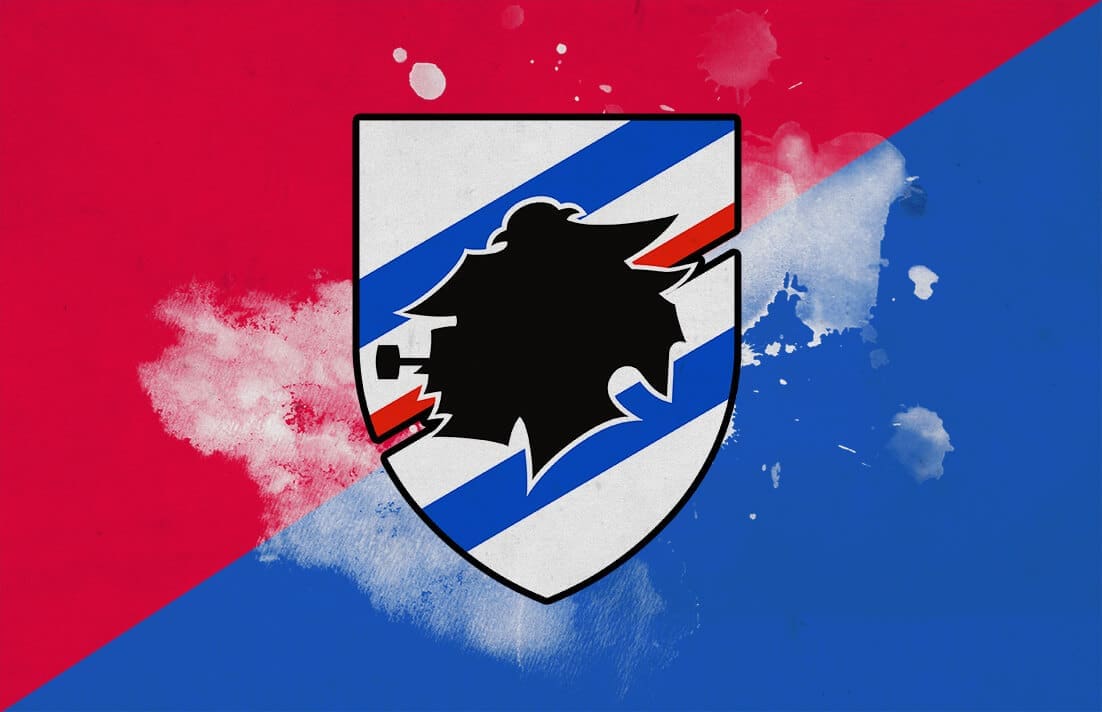




Comments